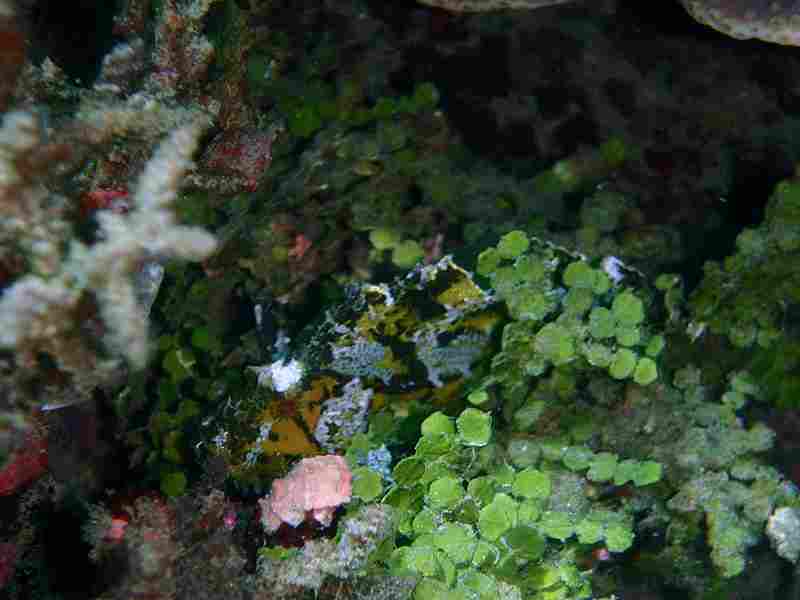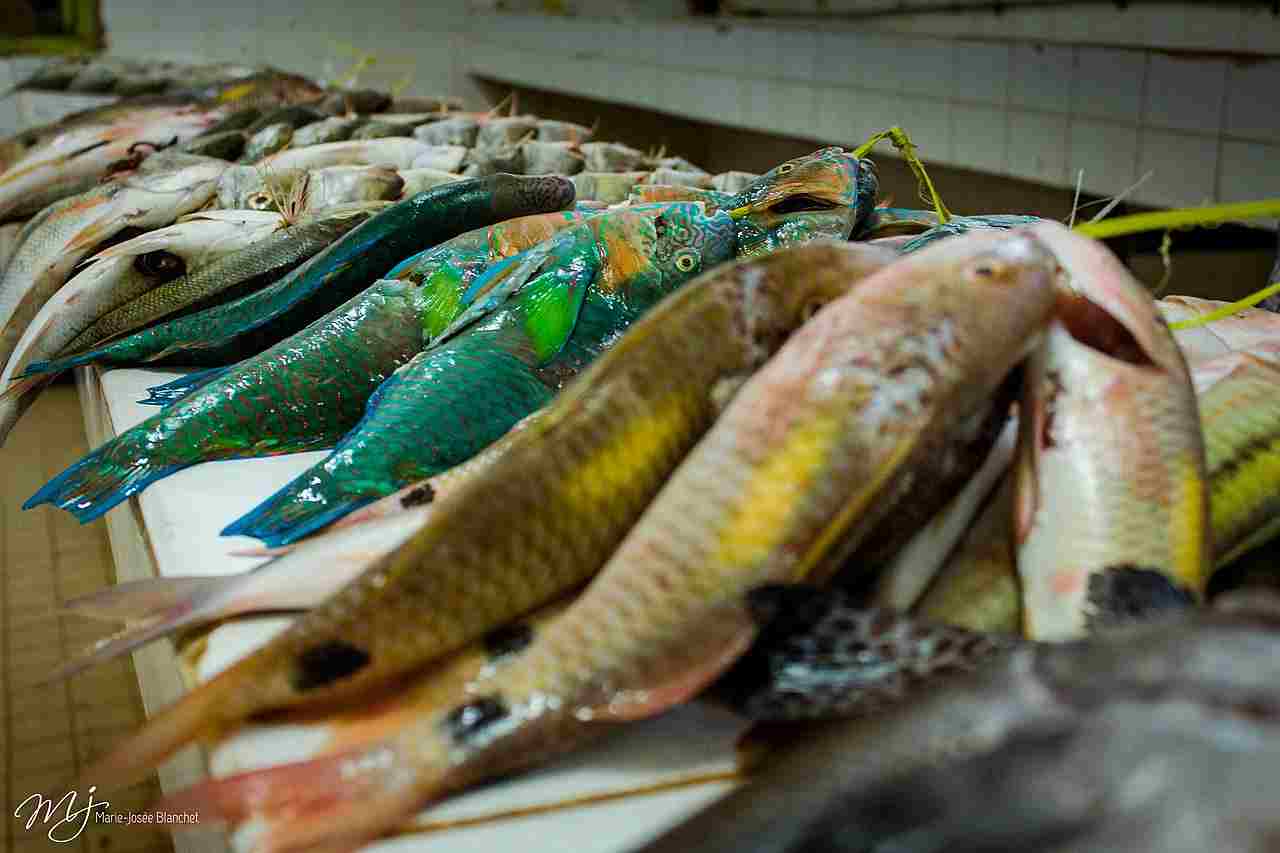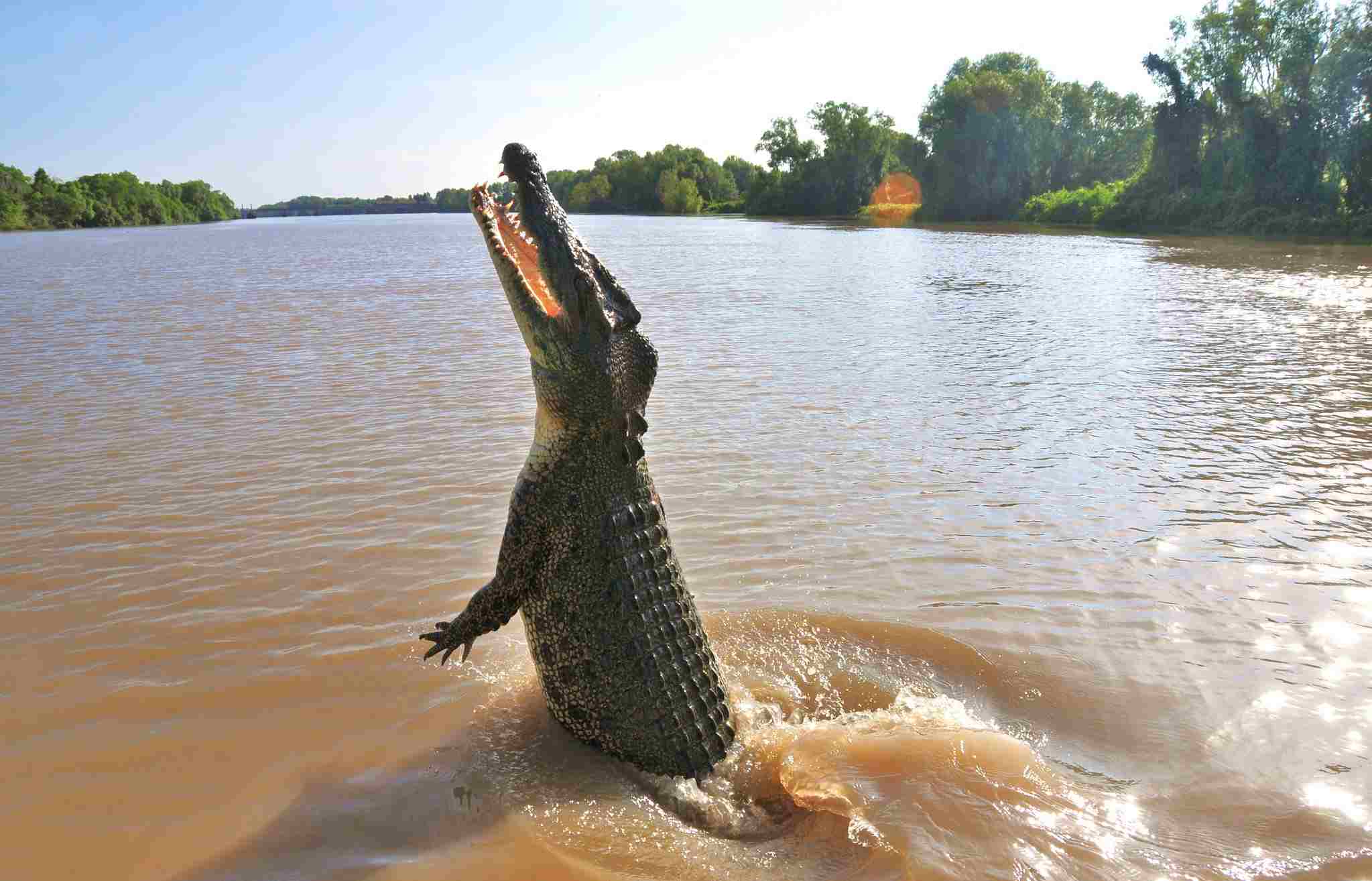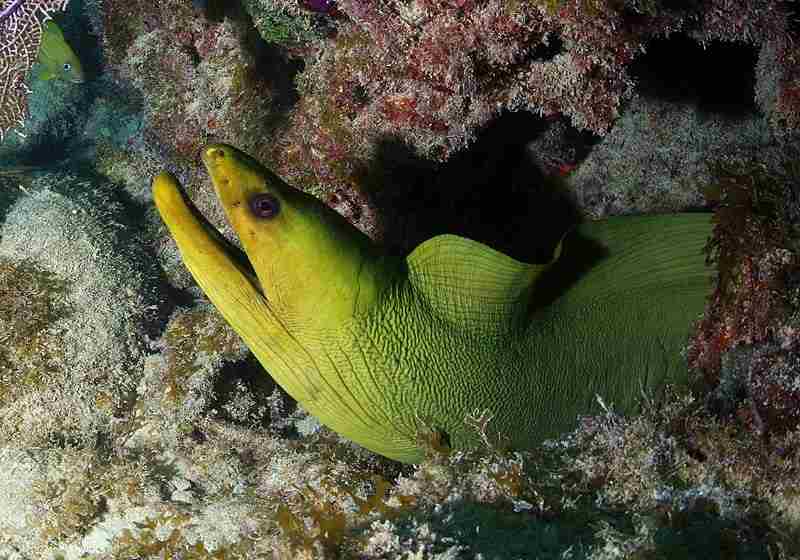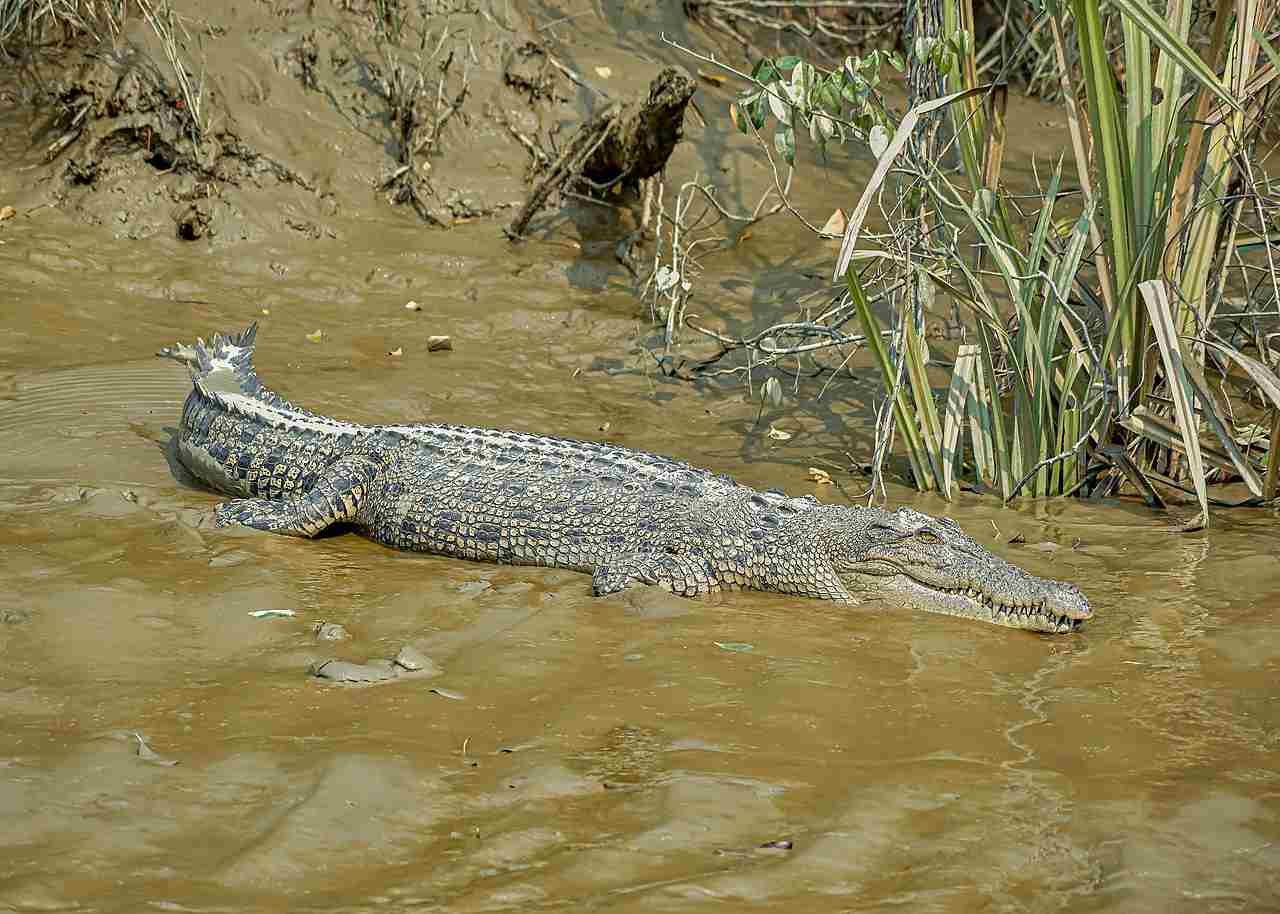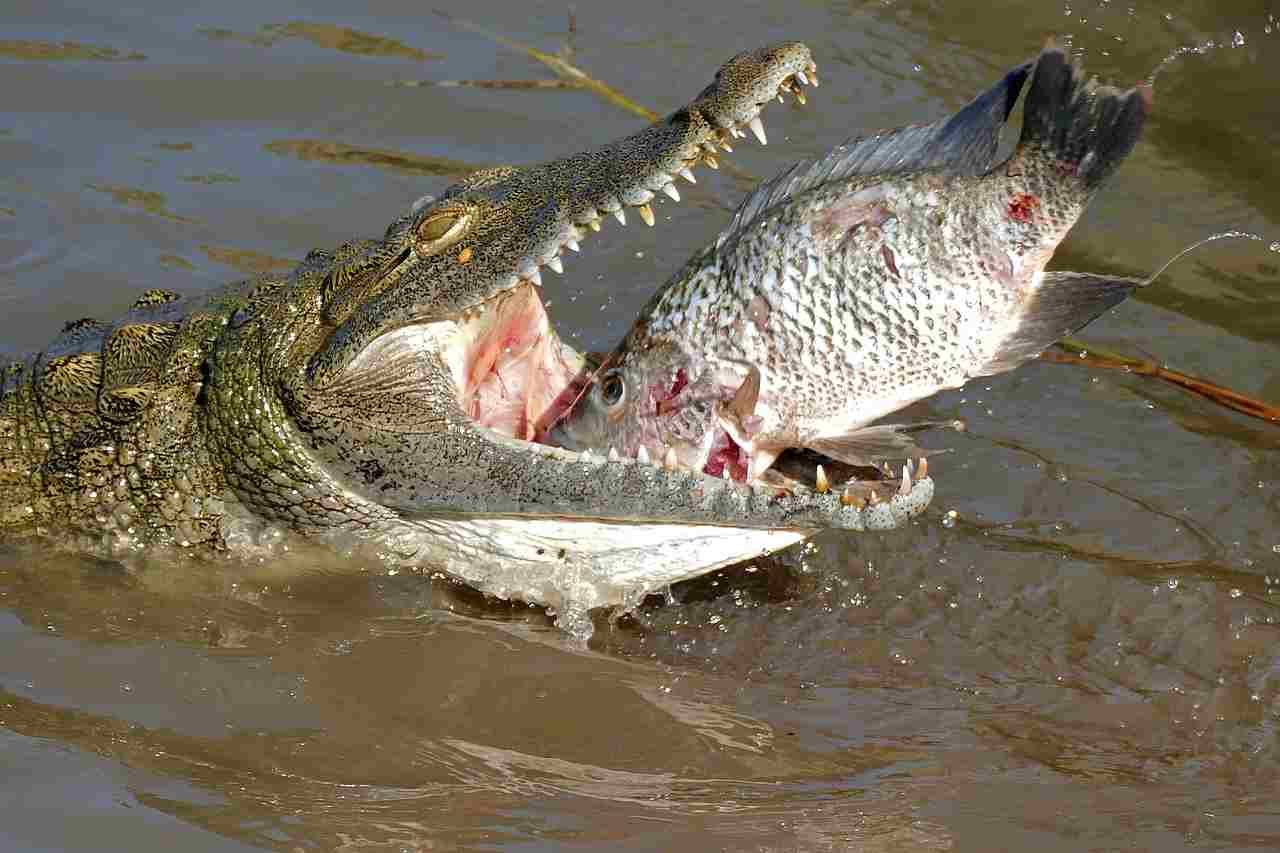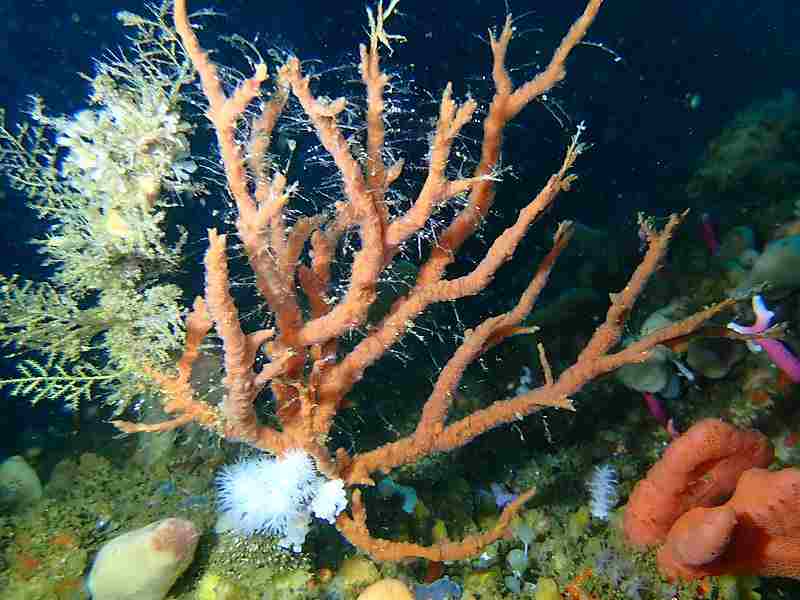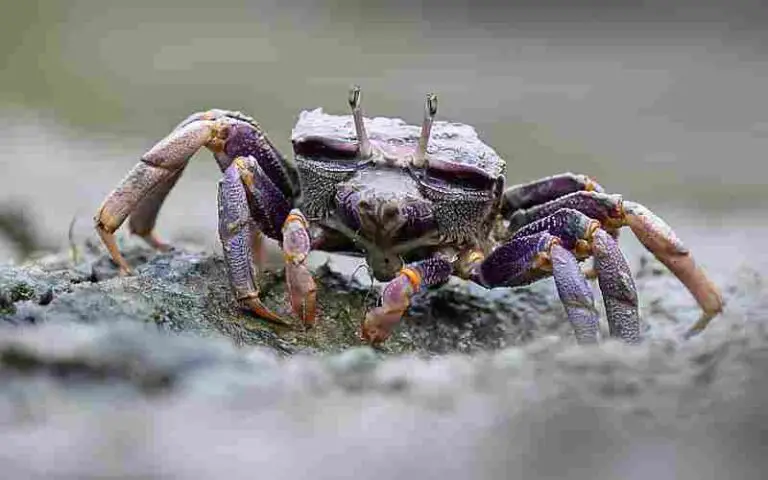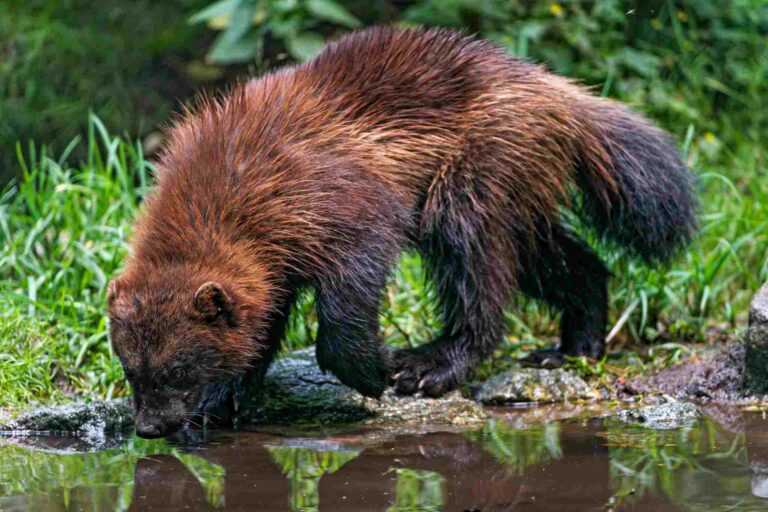Coral Reef Food Web Based on Multi-Chain Interconnections
The coral reef food web is made up of complex interrelations between producers and consumers from different levels and sequences in the trophic hierarchy.
This article discusses the coral reef food web based on multi-chain interconnections, as follows;
1). Food Chain 1 (as a component of the Coral Reef Food Web)
Trophic Level 1: Halodule seagrass, zooxanthellae, seaweed
Trophic Level 2: Parrotfish, green sea turtle, sponges, small crustaceans
Trophic Level 3: Snapper, grouper, triggerfish
Trophic Level 4: Barracuda, horn shark
Trophic Level 5: Caribbean reef shark, saltwater crocodile
Trophic Level 1: Producers in the Coral Reef Food Web (from Chain 1)
The reef producers in chain 1 are; halodule grass, zooxanthellae and seaweed.
Halodule seagrass is a fairly prominent producer in the coral reef food web, which is capable of capturing and converting solar radiation to biomass and energy through photosynthesis.
It is particularly abundant in Red Sea reef systems [3], and has a distinctive growth pattern whereby it forms extensive meadows underwater, and serves as both food source and microhabitat for several reef organisms.
Other functions of halodule seagrass are; oxygen cycling, sediment stabilization, carbon sequestration, and recycling of essential nutrients like phosphorus and nitrogen.
Zooxanthellae are a group of algae that occur symbiotically in the tissues of coral polyps [12].
These algae are photosynthetic and provide energy to the coral polyps; which enables them grow and expand the coral reef structure.
As a result, the existence and sustainability of coral reef ecosystems are heavily dependent on zooxanthellae in the polyps.
Seaweed is a form of macroalgae that is well-represented in many reef communities. Its is an autotrophic producer, and combines its photosynthetic activity with active absorption of nutrients from the water column.
Multiple marine organisms depend on seaweed as a microhabitat and food source.
Trophic Level 2: Primary Consumers in the Coral Reef (from Chain 1)
Primary consumers in chain 1 of the coral reef food web are; parrotfish, green sea turtle, sponges, and small crustaceans.
Parrotfish are herbivorous grazers whose diet includes microalgae and seagrass, as well as coral polyps which they consume in the process of grazing.
By reason of their activities, parrotfish play an important role in the control of reef algal growth.
They contribute to the health of coral reefs by preventing excessive algal growth, which would otherwise reduce coral growth rate.

Green sea turtle is a herbivorous reptile that feeds primarily on seagrass, which they supplement with benthic macroalgae [5].
By grazing on aquatic vegetation, they help maintain these plants, by promoting regeneration and preventing overgrowth. The overall effect of their feeding habit is the cycling of nutrients in their immediate environment.
Sponges are a group of filter-feeders that survive by extracting organic materials and nutrients from the water column which surrounds them.
These organisms perform what can be described as a natural water purification process in their surrounding, and contribute to water quality maintenance as well as health nutrient equilibrium.
Small crustaceans that function as primary consumers in the coral reef include; amphipods and copepods.
These organisms are important as a food source for several larger consumers in reef habitats; and contribute to energy transfer across the food chain.
Trophic Level 3: Secondary Consumers in the Coral Reef (from Chain 1)
Secondary consumers in the coral reef food web, from chain 1 are; snapper, grouper, and triggerfish.
Snapper is a carnivorous fish that preys on crustaceans, and smaller fish like the herbivorous parrotfish. Prey population-control is a function of snapper fish, and they also contribute to energy flow in the ecosystem.
Groupers are also carnivorous fish, whose diet comprises of a wide variety of reef animals like cephalopod mollusks, crustaceans and fish.
They are often viewed as key reef predators, and are effective in their role of regulating the population of their prey.

Triggerfish are predatory fish whose carnivorous habits enable them consume a variety of invertebrates that include sea urchins, mollusks and crustaceans.
Their adaptations include specialized dentition and jaws for capturing prey. Like other predators in the coral reef, triggerfish are crucial to the regulation of lower trophic populations.
Trophic Level 4: Tertiary Consumers in the Coral Reef (from Chain 1)
Tertiary consumers from chain 1 are; barracuda and horn shark.
Barracuda is an opportunistic predatory fish that consumes cephalopods and smaller fish.
They are equipped with sharp teeth and rapid motion which they use to feed and regulate prey population sizes.
Horn shark is a benthic predator [4] that feed on crustaceans, mollusks and (especially) bony rish. It has multiple adaptive specializations that enable it function effectively in its habitat and ecological role.
Trophic Level 5: Quaternary Consumers in the Coral Reef (from Chain 1)
Quaternary consumers in chain 5 of the coral reef food web are; Caribbean reef shark and saltwater crocodile.
Caribbean reef shark is a large carnivorous fish whose diet comprises mainly of smaller fish within its habitat. It plays an important role in the maintenance of equilibrium in the reef community; through control of lower trophic abundance.
Saltwater crocodile is a reptilian apex predator that can be found hunting around coral reefs.
It must be noted that crocodiles do not generally exert a strong presence or influence on reef communities; but rather are more dominant in shallow mangrove and estuarine zones.
Prey for the saltwater crocodile in the coral reef, comprises of turtles and fish, among other organisms.
Adaptive Features and Functions of Organisms in Chain 1
The adaptive features and functions of organisms in the food chain work together to sustain the flow of bioenergy through the coral reef.
Primary producers like seagrass, zooxanthellae, and seaweed are autotrophic and convert solar radiation to biomass and energy.
Primary consumers like the parrotfish and green sea turtles, consume the primary producers, thereby extracting nutrients and energy for their own survival.
Carnivorous organisms like snapper, grouper, and triggerfish, feed on smaller organic groups including the herbivores; thereby facilitating further transfer of energy upward across the trophic levels.
Apex predators like barracuda, horn shark, Caribbean reef shark, and saltwater crocodile consume other reef organisms in lower trophic level organisms, thereby exerting control over their population dynamics.
Trophic interactions in the food chain play a role in maintaining biodiversity, species richness, and overall balance within the reef biome.
Grazing activities of the primary consumers help the ecosystem by preventing overgrowth of algae, which in turn enables coral colonies to remain productive and expand.
Predatory fish play a role in regulating the population size/abundance of their prey; and in preventing overpopulation.
Apex predators are important for influencing the behavior as well as abundance, of organisms in lower trophic levels.
2). Food Chain 2
Trophic Level 1: Halimeda algae, zooxanthellae, cyanobacteria
Trophic Level 2: Yellow tang, gastropods, sea urchin
Trophic Level 3: Barracuda, moray eel, large lobster
Trophic Level 4: Caribbean reef shark, whale shark
Trophic Level 1: Producers in the Coral Reef Food Web (from Chain 2)
Producers in chain 2 of the coral reef food web are; Halimeda algae, zooxanthellae, and cyanobacteria.
Halimeda algae are a group of calcareous algae [14] that occur in coral reefs among other zones of the marine biome.
They are important as primary producers and contribute to reef structure-building by means of their carbonate secretions.
Halimeda algae are crucial toward oxygen production, habitat provision, nutrient cycling, and the overall role of the ocean as a carbon sink.

Zooxanthellae are a group of photosynthetic algae that form a distinctive symbiotic relationship with coral polyps, so that they carry out photosynthesis from within the tissues of corals and support the survival of their host.
Their presence and symbiosis are both essential for the survival and growth of coral reefs.
Cyanobacteria are a autotrophic bacteria which have the ability to produce oxygen, and contribute to nitrogen fixation [7]. They are important primary producers in biomes with limited nutrients; and serve as both a food source and a medium of nutrient-cycling in coral reefs.
Trophic Level 2: Primary Consumers in the Coral Reef
Primary consumers in the coral reef food web, from chain 2 are; yellow tang, gastropods, and sea urchin.
Yellow tang is a herbivorous fish which feeds primarily on macroalgae, including Halimeda algae.
Like other primary consumers, this fish plays a role in the regulation/control of algal growth on the reef, while contributing to the cycling of nutrients and energy.
Gastropods that consume plant matter in the coral reef include some species of marine slugs (like the lettuce sea slug) and snails.
For many of these species, algae constitute a major source of food. They usually have specialized adaptations that enable them graze on algae-covered substrate (like rocks) and their activities contribute to ecologic balance.

Sea urchins are a group of invertebrates that are known to graze on algae in addition to other organic food sources. They help to regulate algal growth and contribute to the health of the reef ecosystem.
Trophic Level 3: Secondary Consumers in the Coral Reef Food Web
Secondary consumers in chain 2 are; barracuda, moray eel, and large lobster(s).
Barracudas are opportunistic predatory fish that consume mollusks, as well as smaller fish within their environment
They have locomotive and dental adaptations that make them efficient at their role.
Moray eel is a carnivorous fish that usually shelters and hides in holes and crevices within the coral reef [9], from which it may ambush prey.
It possesses multiple biological advantages over smaller reef organisms which it consumes.
Large lobsters are distinctively-sized crustaceans that usually feed as opportunistic scavengers.
They can be classified ad secondary consumers due to their size advantage, which enables them exploit a wide variety of dietary options including other crustaceans, gastropods, small fish, carrion, and organic detritus.
Their scavenging habit implies that large lobsters can also be (correctly) classified as detrivores that facilitate biodegradation.
Trophic Level 4: Tertiary Consumers in the Coral Reef (from Chain 2)
Tertiary consumers in the coral reef are; Caribbean reef shark, and whale shark.
The Caribbean reef shark is a large predatory fish that consumes various kinds of fish; including herbivorous reef fish.
As an apex predator, Caribbean reef shark plays a role in the regulation of adaptive and demographic attributes of organisms in lower trophic levels. This contributes to the overall equilibrium of the reef biome.
Whale shark is another large predatory fish that occurs in the coral reef.
It is a filter feeder, and its diet consists of benthic invertebrates, plankton, and small fish.
Whale shark plays a key role in the cycling of nutrients and flow of energy across the food web, by consuming prey.
Recurring Organisms from Preceding Chain(s)
1. Zooxanthellae also occur in chain 1
2. Barracuda occurs as a tertiary consumer in chain 1 (it is a secondary consumer in chain 2)
3. Caribbean reef shark is also an apex predator in chain 1. In chain 2 it occupies trophic level 4, while in chain 1 it occupies trophic level 5
Adaptive Features and Functions of Organisms in Chain 2 of the Coral Reef Food Web
Adaptive features and functions of organisms in food chain 2, all work together to produce a state of continuous energy flow.
Producers such as Halimeda algae, zooxanthellae and cyanobacteria, capture and utilize solar energy to produce chemical energy in the process of photosynthesis.
Primary consumers like gastropods, sea urchins and yellow tangs, gain nutrients and energy by feeding on producers.
Secondary consumers like barracuda; moray eel and large lobster; all prey on smaller reef organisms, and help to transfer energy further up the chain, to apex predators like Caribbean reef shark and whale shark.
Biodiversity in the coral reef is maintained by trophic interactions.
Through their grazing activities, the herbivores help prevent the overgrowth of algae, thereby ensuring coral survival and reef expansion.
Predatory fish are effective for regulating the abundance of their prey; thereby preventing unfavorable population explosion.
The apex predators are crucial toward controlling the ecosystem, as they help regulate the behavior and abundance of organisms in lower trophic levels.
3). Food Chain 3 (as a component of the Coral Reef Food Web)
Trophic Level 1: Zooxanthellae, seaweed, cyanobacteria
Trophic Level 2: Parrotfish, small crustaceans, sponges
Trophic Level 3: Snapper, hawksbill turtle
Trophic Level 4: Horn shark, whitetip reef shark
Trophic Level 5: Caribbean reef shark
Trophic Level 1: Producers in the Coral Reef (from Chain 3)
Producers in the coral reef food web from chain 3 are; zooxanthellae, seaweed and cyanobacteria.
Zooxanthellae are photosynthetic, symbiotic algae that occur communally with coral polyps.
They may be found in the tissues of corals, and their photosynthetic activity produces energy that is used to sustain the symbiotic assemblage. Zooxanthellae in coral polyps is a vital component that helps sustain reefs.
Seaweed or macroalgae is a primary producer in the coral reef food web, which obtains energy through photosynthesis, and is effective in its role as a facilitator of nutrient cycling, as well as habitat creation.
Cyanobacteria is a type of photosynthetic bacteria that is capable of producing oxygen, and fixing atmospheric nitrogen.
Trophic Level 2: Primary Consumers in the Coral Reef (from Chain 3)
Parrotfish, small crustaceans and sponges are coral reef primary consumers in chain 3.
Food for parrotfish includes seaweed and zooxanthellae (which they often consume alongside coral polyps [11]).
These animals are important in their role of algal growth-control within their habitat, and prevent potentially-harmful overgrowth.
Their feeding activity also facilitates the degradation and removal of dead corals, allowing for new growth and optimal health of the reef.
Small crustaceans like amphipods and copepods are important zooplankton in reef habitats [6]. They are food sources for several higher organisms and also contribute to energy flow within the food web.
Sponges are a group of filter-feeding invertebrates which extract organic matter and nutrients from the water column for their own growth.
In coral reef environments, they help to maintain water quality by filtering-out suspended particles, and may also serve as micro-habitats for other reef organisms.
Trophic Level 3: Secondary Consumers in the Coral Reef (from Chain 3)
The secondary consumers in chain 3 of the coral reef food web are; snapper and hawksbill turtle.
Snapper is a relatively-small predatory fish which consumes small crustaceans, herbivorous fish, and mollusks, among other lower organisms. It helps regulate prey populations and transfers energy from primary consumers to higher predatory organisms.
The hawksbill turtle is an omnivorous aquatic reptile whose food consists of invertebrates like jellyfish, sponges and sea anemones [2]. It helps control sponge populations, and contributes immensely to the health of the coral reef as a whole.

Trophic Level 4: Tertiary Consumers in the Coral Reef
Tertiary consumers in the coral reef food web from chain 3 are; horn shark and whitetip reef shark.
Horn shark is a small nocturnal and predatory fish that mainly preys on benthic invertebrates like mollusks and some crustaceans, as well as small fish.
Whitetip reef shark is a medium-sized carnivorous fish that consumes cephalopods, crustaceans and smaller reef fish. It can be considered similar to the horn shark in terms of trophic capacity; and also influences the adaptation and population of its prey.
Trophic Level 5: Quaternary Consumers in the Coral Reef (from Chain 3)
The Caribbean reef shark is a quaternary consumer in chain 3 of the coral reef food web.
This apex predator feeds on several species of invertebrates and fish, including other predators in lower trophic levels. It exerts its influence over the rest of the coral reef food web/chain, and controls the populations of its prey.

Recurring Organisms from Previous Chains
1. Zooxanthellae is also a producer in Chains 1 and 2
2. Seaweed occurs in Chain 1
3. Cyanobacteria can also be found in Chain 2
4. Parrotfish is a primary consumer also in Chain 1
5. Sponges occur in Chain 1
6. Small crustaceans are primary consumers in Chain 1
7. Snapper is a secondary consumer in Chain 1
8. Horn shark is also a tertiary consumer in Chain 1
9. Caribbean reef shark is a quaternary consumer in Chain 1 and a tertiary consumer in Chain 2 (in chain 3 it is a quaternary consumer - all three chains represent Caribbean reef shark as an apex predator)
The recurrence of organisms in multiple food chains is the basis on which the coral reef food web is formed. The above list also shows how complex trophic interactions in reef ecosystems are; by revealing the appearance of organisms in different trophic levels, in different food chains.
Adaptive Features and Functions of Organisms
The adaptive features and functions of organisms in the food chain, all collaborate to sustain the flow of energy across the various trophic levels.
Primary producers such as seaweed, cyanobacteria and zooxanthellae; all capture and transform solar radiation to chemical bioenergy; through the process of photosynthesis.
Primary consumers like parrotfish, small crustaceans and sponges, derive nutrients and energy by consuming the primary producers. This enables them transfer energy to the overlying trophic level.
Predatory reef organisms like snapper, hawksbill turtles, horn sharks, whitetip reef sharks, and Caribbean reef sharks; all feed on organisms in lower trophic levels; and thereby contribute to the regulation of prey populations. The balance, consistency and functionality of the coral reef food web, are all built on these factors.
4). Food Chain 4
Trophic Level 1: Halimeda algae, halodule seagrass, zooxanthellae
Trophic Level 2: Green sea turtle, gastropods, yellow tang
Trophic Level 3: Grouper, moray eel
Trophic Level 4: Saltwater crocodile
Trophic Level 1: Producers in the Coral Reef Food Web (from Chain 4)
Halimeda algae; halodule seagrass, and zooxanthellae are the producers in chain 4.
Halimeda algae characteristics include a calcareous composition and photosynthetic capabilities.
Their photosynthetic capabilities make them primary producers in the coral reef; and they play a vital role in the cycling of nutrients and provision of substrate, as well as habitat for various reef species.
Halodule seagrass is known to form dense meadows in the ocean [1]. It is a flowering marine plant that provides shelter and food for many reef organisms.
Functions of halodule seagrass include sediment-stabilization, nutrient cycling and oxygen production.
Zooxanthellae are photosynthetic algae that share a symbiotic relationship with coral polyps, and reside in their (that is; the polyps') tissues. They contribute to reef formation by providing energy for corals.
Trophic Level 2: Primary Consumers in the Coral Reef (from Chain 4)
Green sea turtle, gastropods and yellow tang, are the primary consumers in chain 4.
Green sea turtles feed primarily on microalgae and seagrass.
They are important to the maintenance of seagrass beds, through nutrient recycling, and growth-control.
As a result of their grazing activities, green sea turtles facilitate regenerative productivity in marine vegetation, and thereby improve the health of the entire ecosystem.
Gastropods like marine slugs and snails, often function as primary consumers, and may be found feeding on seagrass, microalgae, as well as detrital organic matter [10].
Their activities facilitate the recycling of marine ecological resources, and they serve as a food source for higher consumers.
Yellow tang also consumes seagrass and microalgae. It contributes to reef health and maintenance by controlling the growth of algae.
Trophic Level 3: Secondary Consumers in the Coral Reef Food Web (from Chain 4)
The secondary consumers in chain 4 are; groupers and moral eels.
Food for these predators comprises of gastropods, cephalopods, crustaceans, and smaller fish.
They are instrumental to the control of primary consumer-populations, the sustenance of balance and the flow of energy in coral reefs.
Trophic Level 4: Tertiary Consumers
The apex predator in chain 4 is saltwater crocodile.
Although this reptile is not strongly represented in coral reefs compared to other predators, they may traverse the reef ecosystem frequently in search of prey.
Saltwater crocodiles feed on turtles, fish, and crustaceans. They also are active in near-surface and terrestrial-wetland zones, where they prey on mammals.
Recurring Organisms from Preceding Chains
1. Halimeda algae is found also in Chains 1 and 2
2. Chains 1, 2, and 3 include zooxanthellae as a coral reef producer
3. Halodule seagrass occurs in Chain 1
4. Green sea turtle is a primary consumer in Chain 1
5. Gastropods occur in Chain 2
6. Yellow tang is a primary consumer in Chain 2
7. Groupers occur in Chain 1 as secondary consumers
8. The moray eel is also a secondary consumer in Chain 2
9. Saltwater crocodile is an apex (quaternary) predator in Chain 1 (while occurring as a tertiary consumer here in Chain 4)
Adaptive Features and Functions of Organisms in Chain 4
Primary producers like halimeda algae, halodule seagrass, and zooxanthellae are equipped with photosynthetic pigmentation to capture and convert sunlight into bioenergy.
Green sea turtles, gastropods, and yellow tang have evolved to depend on primary producers as a food source; and play a role in transferring energy to higher consumers like groupers, moray eels, and saltwater crocodiles.
5). Food Chain 5 (as a component of the Coral Reef Food Web)
Trophic Level 1: Seaweed, cyanobacteria, zooxanthellae
Trophic Level 2: Sea urchin, parrotfish, small crustaceans
Trophic Level 3: Triggerfish, grouper, snapper
Trophic Level 4: Moray eel, barracuda, horn shark
Trophic Level 5: Whale shark, Caribbean reef shark
Trophic Level 1: Producers
The producers in chain 5 are; seaweed; cyanobacteria and zooxanthellae.
Their characteristics range from microscopic to macroscopic, and algae to bacteria. Among them, zooxanthellae is unique for being an integral component of coral reefs, as a result of symbiosis with the coral polyps.
In addition to photosynthetic activity, reef producers are the ultimate food source for organisms within their environment. They also create micro-habitats by serving as shelter for some species.
Trophic Level 2: Primary Consumers
Primary consumers in chain 5 are; sea urchin, parrotfish and small crustaceans.
Sea urchins are echinoderms [8] that consume microalgae and seaweed.
Parrotfish and small crustaceans also feed on producers.
Primary consumers regulate producer abundance, and themselves are consumed by tertiary (and quaternary) consumers.
Trophic Level 3: Secondary Consumers
Secondary consumers in chain 5 are; triggerfish, groupers, and snappers; all of which are predatory and consume crustaceans, as well as smaller fish.
Trophic Level 4: Tertiary Consumers
Tertiary consumers in chain 5 are; moray eel, barracuda and horn shark.
They have adaptations such as sharp teeth, strong jaws, and rapid mobility; all of which enable them thrive in their predatory role.
Both primary and secondary consumers are potential sources of food for these organisms.
Trophic Level 5: Quaternary Consumers
The whale shark and Caribbean reef shark are quaternary consumers in chain 5.
Whale shark is widely considered to be the largest marine fish [13]. It is a filter-feeder, and consumes large numbers of planktonic organisms, as well as small fish.

Caribbean reef sharks also prey on smaller fish, and some planktonic organisms.
Recurring Organisms that Link Outward to Form the Food Web
1. Seaweed occurs in Chain 3
2. Cyanobacteria can be found in Chains 2 and 3
3. Zooxanthellae can be found in all food chains discussed in this article; due to their symbiosis with coral polyps that form the reef itself
4. Sea urchin occurs in Chain 2
5. Parrotfish can be found also in Chains 1 and 3
6. Small crustaceans (primary consumers) occur in Chains 1 and 3
7. Groupers are among the secondary consumers in Chains 1 and 4
8. Snapper can be found in Chains 1 and 3
9. Moray eel occurs in Chains 2 and 4
10. Barracuda is also a predator in Chains 1 and 2
11. Horn shark occurs in Chains 1 and 3
12. Whale shark is an apex predator also in Chain 2
13. Caribbean reef shark occurs in Chains 1, 2, and 3
Adaptive Features and Functions of Organisms
Primary producers like seaweed, cyanobacteria, and zooxanthellae are photosynthetic and saltwater-tolerant; so that they are able to produce biomass from sunlight, carbon dioxide and water.
They are consumed by urchins, parrotfish, and small crustaceans; which have herbivorous, omnivorous and detrivorous adaptations to allow them exploit plant materials for nutrients and energy.
Triggerfish, grouper, and snapper are predatory individuals that feed on crustaceans and small fish.
Higher predators like moray eels, barracudas, horn sharks, whale shark and Caribbean reef shark; use their superior size and/or hunting ability to exploit a wide range of food sources, while being less vulnerable to predation themselves.
Conclusion
The coral reef food web consists of multiple interconnections between organisms in various trophic levels. These interconnections can be simplified into distinct linear sequences (food chains) such as those discussed in this article.
Below is a summary of the food chains used;
Food Chain 1: Halodule seagrass, zooxanthellae, seaweed (Trophic Level 1)→parrotfish, green sea turtle, sponges, small crustaceans (Trophic Level 2)→snapper, grouper, triggerfish (Trophic Level 3)→barracuda, horn shark (Trophic Level 4)→Caribbean reef shark, saltwater crocodile (Trophic Level 5)
Food Chain 2: Halimeda algae, zooxanthellae, cyanobacteria (Trophic Level 1)→yellow tang, gastropods, sea urchin (Trophic Level 2)→barracuda, moray eel, large lobster (Trophic Level 3)→Carribean reef shark, whale shark (Trophic Level 4)
Food Chain 3: Zooxanthellae, seaweed, cyanobacteria (Trophic Level 1)→parrotfish, small crustaceans, sponges (Trophic Level 2)→snapper, hawksbill turtle (Trophic Level 3)→horn shark, whitetip reef shark (Trophic Level 4)→Carribean reef shark (Trophic Level 5)
Food Chain 4: Halimeda algae, halodule seagrass, zooxanthellae (Trophic Level 1)→green sea turtle, gastropods, yellow tang (Trophic Level 2)→grouper, moray eel (Trophic Level 3)→saltwater crocodile (Trophic Level 4)
Food Chain 5: Seaweed, cyanobacteria, zooxanthellae (Trophic Level 1)→sea urchin, parrotfish, small crustaceans (Trophic Level 2)→triggerfish, grouper, snapper (Trophic Level 3)→moray eel, barracuda, horn shark (Trophic Level 4)→whale shark, Caribbean reef shark (Trophic Level 5)
References
1). Barros, K.; Rocha-Barreira, C.; Magalhães, K. (2016). "Seagrass meadows on the Northeast coast of Brazil: habitat influence on the spatial and seasonal variations." Aquatic Ecosystems: Influences, Interactions and Impact on the Environment (pp.1-40). Available at: https://www.researchgate.net/publication/302524798_Seagrass_meadows_on_the_Northeast_coast_of_Brazil_habitat_influence_on_the_spatial_and_seasonal_variations. (Accessed 4 July 2023).
2). Diaz, M. P. R.; Diez, C. E.; Dam, R. V.; Sabat, A. M. (2011). "Foraging Selectivity of the Hawksbill Sea Turtle (Eretmochelys imbricata) in the Culebra Archipelago, Puerto Rico." Journal of herpetology 45(Sep 2011):277-282. Available at: https://doi.org/10.1670/10-120.1. (Accessed 4 July 2023).
3). El Shaffai, A.; Rouphael, A.; Abdulla, A. (2011). "Field Guide to Seagrasses of the Red Sea." International Union for the Conservation of Nature. Available at: https://www.researchgate.net/publication/266031410_Field_Guide_to_Seagrasses_of_the_Red_Sea. (Accessed 4 July 2023).
4). Fuentes, C. C.; Simental-Anguoano, M. R.; Galván-Magaña, F.; Medina, M. A. (2020). "Feeding habits of the horn shark Heterodontus francisci (Girard, 1855) in the northwest of Baja California Sur, Mexico." Journal of Applied Ichthyology 36(5). Available at: https://doi.org/10.1111/jai.14004. (Accessed 4 July 2023).
5). Hearne, E. L.; Johnson, R. A.; Gulick, A.; Candelmo, A.; Bolten, A. B.; Biomdal, K. A. (2018). "Effects of green turtle grazing on seagrass and macroalgae diversity vary spatially among seagrass meadows." Aquatic Botany 152. Available at: https://doi.org/10.1016/j.aquabot.2018.09.005. (Accessed 4 July 2023).
6). Heidelberg, K. B.; Sebens, K. P.; Purcell, J. E. (2004). "Composition and sources of near reef zooplankton on a Jamaican forereef along with implications for coral feeding." Coral Reefs 23(2):263-276. Available at: https://doi.org/10.1007/s00338-004-0375-0. (Accessed 4 July 2023).
7). Kulasooriya, S.; Magana-Arachchi, D. N. (2016). "Nitrogen fixing cyanobacteria: Their diversity, ecology and utilization with special reference to rice cultivation." Journal of the National Science Foundation of Sri Lanka 44(2):111. Available at: https://doi.org/10.4038/jnsfsr.v44i2.7992. (Accessed 4 July 2023).
8). Lubis, S. A.; Yolanda, R., Purnama, A. A.; Karno, R. (2016). "The Sea Urchin (Echinoidea) from Panjang Island Water, Bangka Belitung Province." Omni-Akuatika 12(2). Available at: https://doi.org/10.20884/1.oa.2016.12.2.111. (Accessed 4 July 2023).
9). Luiz, O. J. (2005). "Unusual behaviour of moray eels on an isolated tropical island (St. Paul’s Rocks, Brazil)." Coral Reefs 24(3):501-501. Available at: https://doi.org/10.1007/s00338-005-0500-8. (Accessed 4 July 2023).
10). Ozdemir, R. C.; Paruğ, Ş. (2018). "Effect of Water Quality Parameters on Reproduction of Strawberry Conch Snail (Conomurex luhuanus) in Marine Aquarium Conditions." International Congress on Engineering and Life Science (ICELIS 2018). Available at:
11). Rempel, H. S.; Bodwin, K. N.; Ruttehberg, B. I. (2020). "Impacts of parrotfish predation on a major reef-building coral: quantifying healing rates and thresholds of coral recovery." Springer, Coral Reefs. Available at: https://doi.org/10.1007/s00338-020-01977-9. (Accessed 4 July 2023).
12). Susanto, H. A.; Komoda, M.; Yoneda, M.; Kano, A.; Tokeshi, M.; Koike, H. (2013). "Relationship between Coral Tissues and Zooxanthellae in a Seasonal Tropical Environment of East Kalimantan." Available at: https://www.researchgate.net/publication/339132966_Relationship_between_Coral_Tissues_and_Zooxanthellae_in_a_Seasonal_Tropical_Environment_of_East_Kalimantan. (Accessed 4 July 2023).
13). Thompson, J. A.; Arauio, G. L.; McCoy, E.; Murray, R.; Ponzo, A. (2017). "Feeding the world's largest fish: highly variable whale shark residency patterns at a provisioning site in the Philippines". R Soc Open Sci. 2017 Sep 27;4(9):170394. Available at: https://doi.org/10.1098/rsos.170394. (Accessed 4 July 2023).
14). Vogel, N.; Fabricius, K.; Stahl, J.; Noonan, S. H. C.; Wild, C.; Uthicke, S. (2014). "Calcareous green alga Halimeda tolerates ocean acidification conditions at tropical carbon dioxide seeps: Halimeda growing at CO 2 seeps." Available at: https://doi.org/10.1002/lno.10021. (Accessed 4 July 2023).
